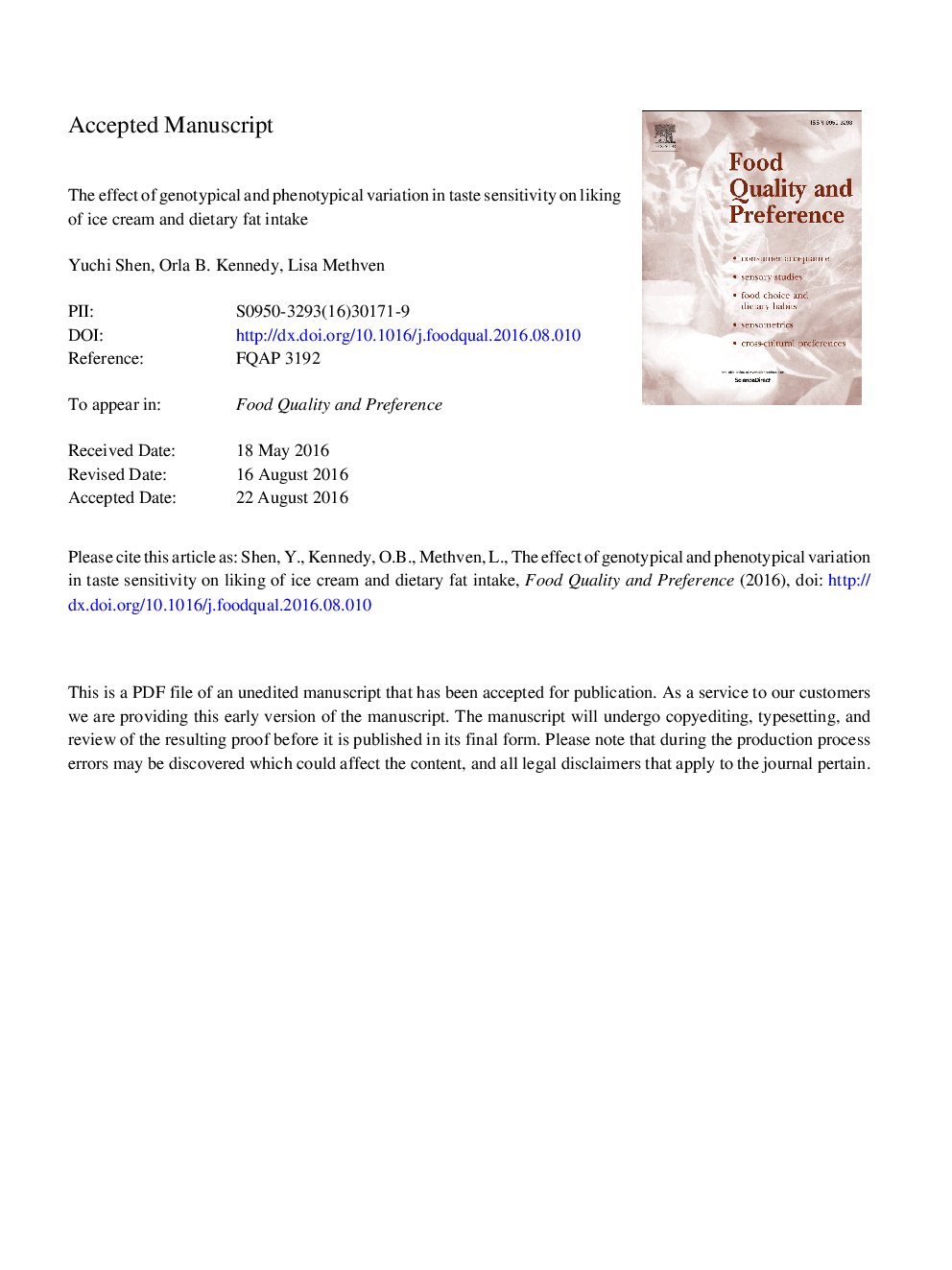ترجمه فارسی عنوان مقاله
تاثیر تنوع ژنوتیپی و فنوتیپی در حساسیت به خواص بستنی و مصرف چربی رژیم غذایی
عنوان انگلیسی
The effect of genotypical and phenotypical variation in taste sensitivity on liking of ice cream and dietary fat intake
| کد مقاله | سال انتشار | تعداد صفحات مقاله انگلیسی |
|---|---|---|
| 120336 | 2017 | 45 صفحه PDF |
منبع

Publisher : Elsevier - Science Direct (الزویر - ساینس دایرکت)
Journal : Food Quality and Preference, Volume 55, January 2017, Pages 79-90

